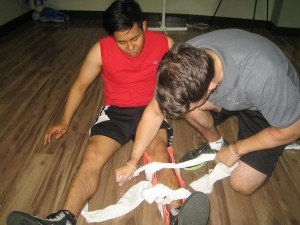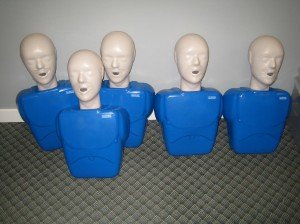Seattle CPR is home to some of the best CPR training courses in the state. We only have one training location in Washington, located right in the city of Seattle. While we have six locations all over the country, all of them have the same programs offered, at the same prices. Schedules are different among these locations because we like to tailor class schedules according to our student’s needs. The Seattle CPR website has a list of our available programs and their respective rates and schedules.
Knowing when a heart attack is happening

Heart attacks are situations where the blood flow to an area of the heart is suddenly stopped, cutting off the supply of oxygen to that particular area. The heart is an organ that constantly needs a supply of oxygen to function adequately like our other organs. If a coronary artery or arteries get obstructred with plaque, this slows and eventually halts the delivery of blood to cardiac muscle, and that cardiac muscle can die.
What is plaque? Plaque is mainly a fatty deposit where calcium, protein, and inflammatory cells have attached to. Plaque usually starts out small but because the area is very conducive to the attachment of certain substances, a vessel can quickly get blocked. Heart attacks manifest as severe chest pain, without relieve from medication or rest. Only morphine sulfate can take away the chest pain from a heart attack.
What you can do after a person has collapsed
If the victim fell unconscious in the street, he or she is most likely to not have broken any bones. However, she might have hit her head to be sure support it if she cannot be roused. However, if the victim fell from the stairs or even a building, he or she could possibly have a spinal injury, so CPR is usually contraindicated. After you have ensured that the victim is safe from further injury, call for medical help immediately.

If there are no contraindications to CPR, start chest compressions immediately at a rate of at least 100 a minute. The compression: ventilation ratio is 40:2, for both children and adult victims. Defibrillation is used to correct an abnormal heart rhythm, not when a person is flatline (asystole). However, AEDs are usually only available once an EMT arrives, or if the victim collapses with medical supplies in the vicinity.
Studying CPR
Basic CPR classes are roughly 4 hours long, teaching one and two-rescuer CPR.
- Basic CPR for the public – one-rescuer CPR, 4 hours
- Basic CPR for HCPs – one-rescuer CPR, 4.5 hours
- Basic Life Support for HCPs- one and two-rescuer CPR, 4.5 hours
Our advanced classes are two days long, teaching therapeutic skills for cardiac arrest management.
- Pediatric Advanced Life Support – adult victims, 16 hours
- Advanced Cardiac Life Support – infants and toddler victims, 14 hours
